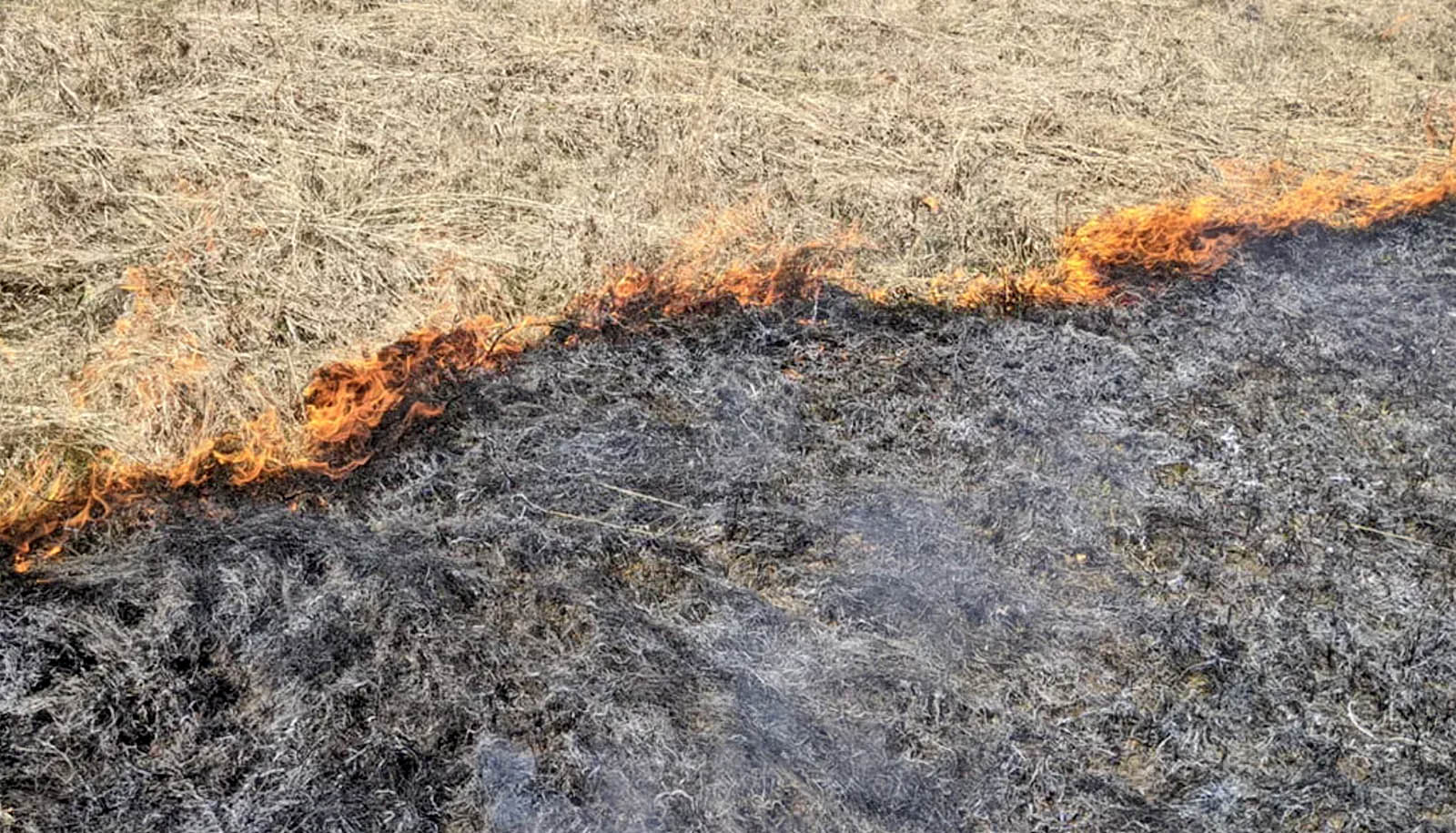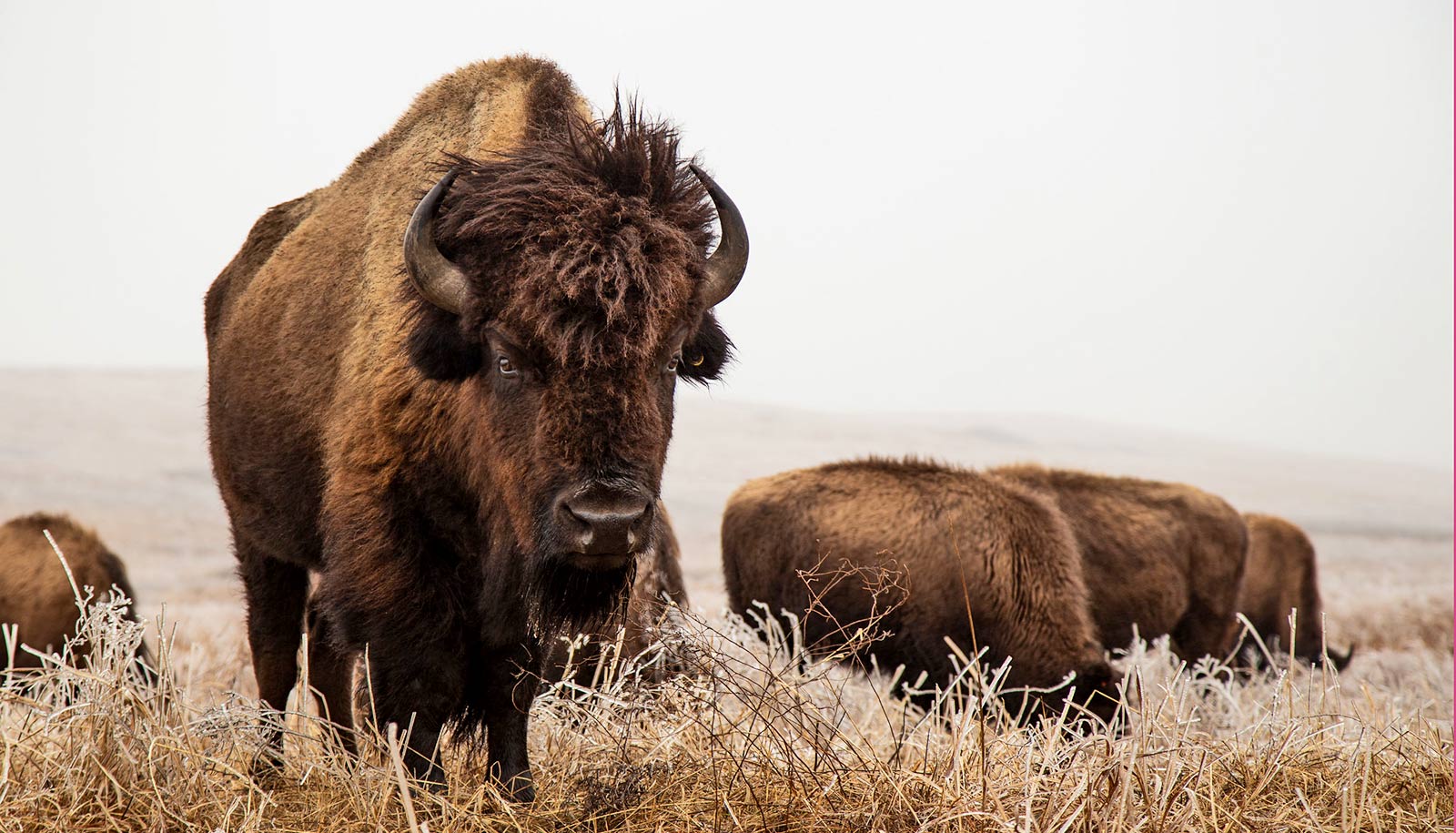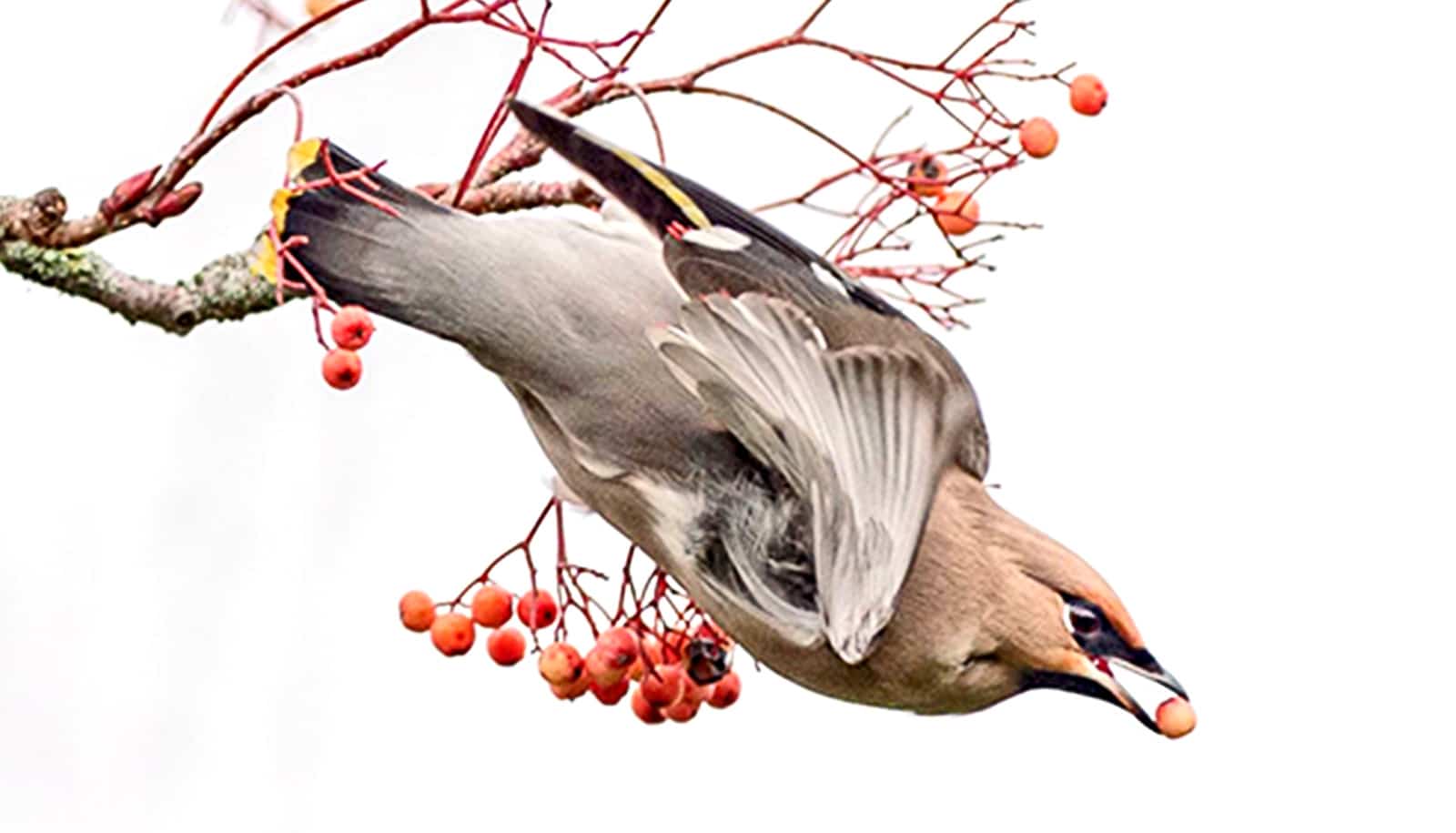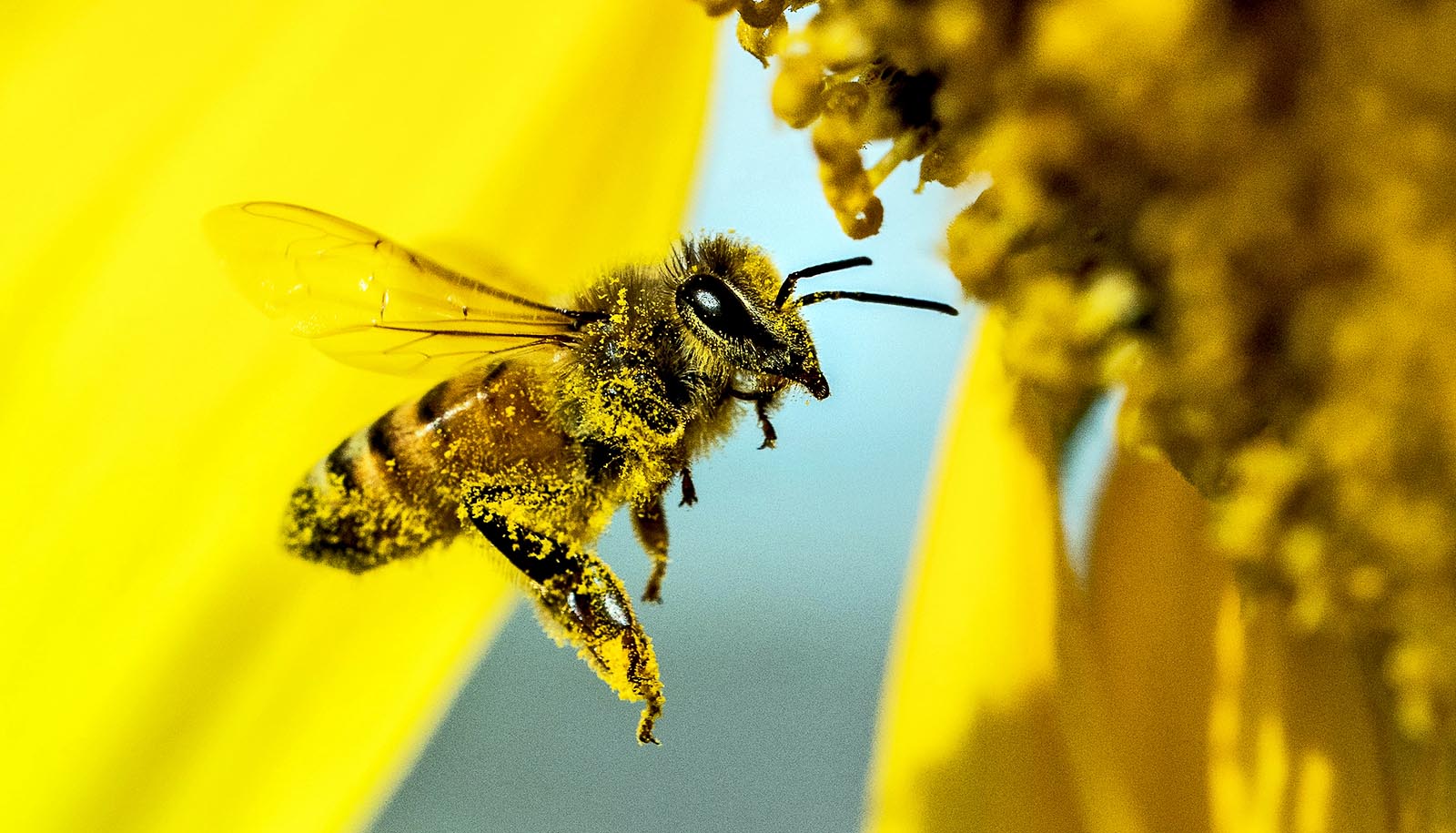When it comes to restoring ecosystems to their natural state, people can’t ignore history if they want to repeat successful efforts, research shows.
“Restoration is somewhat notorious for giving you different outcomes for very similar approaches,” says Chris Catano, a research associate in the department of plant biology at Michigan State University and first author of the new report in the journal Ecology. “There’s a lot of variability.”
Catano works with Lars Brudvig, a professor in the College of Natural Science. One of the Brudvig Lab’s projects is illuminating the fundamental factors that contribute to that variability. The new study focuses on one of those factors—when a plot is restored—through the lens of biodiversity.
“What we’re seeing is that the past matters. History matters,” Catano says.
Working at a site that was once an active airstrip, the team restored 18 plots to prairie. The researchers kept all the restoration conditions as identical as possible except for when the restoration started.
They then tracked how different communities of organisms came together in those plots—for example, which species of plants grew and what other organisms they attracted. Beyond characterizing biodiversity, the team also analyzed how it affects the downstream ecological functions of a plot.
“This has been a huge question in ecology for nearly 30 years now, understanding what are the consequences of biodiversity for the ways an ecosystem functions,” says Brudvig, who is also a core faculty member of the Ecology, Evolution and Behavior Program, or EEB, at Michigan State.
Somewhat surprisingly, more biodiversity didn’t always translate to a more functional ecosystem in the team’s experiment.
There is a lot of evidence supporting a positive relationship between biodiversity and ecosystem function, but many of those studies were carried out in highly controlled environments, the team says. With its unique site, designed specifically to examine the effects of history, the team observed that the relationship is more complex in a more natural setting.
“We saw relationships that ranged from positive to neutral to negative,” Brudvig says. “In nature, the results are a huge mixed bag.”
Brudvig stresses that this work doesn’t discount the previous results or negate the conclusion that, generally speaking, more biodiversity is a good thing. In individual cases, however, Brudvig’s team is showing that the impact of biodiversity is nuanced and complicated—it can’t be summed up in a single value or measured quantity.
“There isn’t a number for biodiversity that tells you the whole story,” Catano says. “In this case, it was the identity of key species and their traits, which are hidden behind numbers, that really matter for how the ecosystems function.”
Lux Arbor and its history
It’s not that ecologists didn’t know that history could affect the outcome of restoration work. They’ve had suspicions that planting seeds after a particularly wet or dry season, for instance, could affect the trajectory of the prairie that would sprout, Catano says.
What’s been missing is data from real-world settings that are still controlled enough to extract meaningful conclusions, Catano says. Another missing piece has been a theoretical component that can explain how history matters and how much it matters.
“It’s challenging because some of the theories aren’t always grounded in reality,” Catano says. “And then applications don’t always have the fundamental theories they need to be useful.”
Catano saw an opportunity to help resolve that disconnect with a set of plots Brudvig and a former doctoral student, Anna (Groves) Funk, established almost a decade ago at the Lux Arbor Reserve. Funk, who earned her doctorate in 2018, is also an author of the paper.
The reserve is part of the W.K. Kellogg Biological Station, or KBS, which is Michigan State’s largest off-campus education complex and one of North America’s premier inland field stations. A neurosurgeon named Richard Light gave the reserve to KBS in 1991.
Light was also an amateur pilot, and the gifted land included a kilometer-long airstrip. It’s since been reclaimed by nature—mostly by weeds and invasive species—but it still provided a one-of-a-kind opportunity to Brudvig and his team.
“It’s incredibly level and it had incredibly uniform vegetation. It is a great place to do an ecology study,” Brudvig says. “Anna and I started dreaming this up in 2013, and we’ve been curating it since then. It’s taken cooperation across campus to keep it running.”
Mark Manuszak, the site manager at Lux Arbor, has been particularly instrumental in implementing and maintaining the experiment, which officially launched in 2014.
From 2014 to 2016, Funk began restoring six plots each year to prairie, with the only difference between the plots being the year she seeded them.
“People on the ground are full of anecdotes like, ‘Because there was a drought this year, our restoration turned out differently.’ But there are lots of other potential explanations,” Brudvig says. “Anna set up a really nice experiment that controlled for all of these confounding variables.”
“This site is super valuable since it has those multiple plantings in one place,” says Funk, who is now a freelance science writer and editor. “It let us ask so many questions about what happens year after year.”
By design, the site allowed the team to characterize not only how biodiversity was affected by planting year, but also the consequences of those differences.
“I was pleasantly surprised when Chris’s analyses revealed such important effects,” Funk says. “We already knew that conditions in the planting year had a big impact on species, but it’s even cooler to see how those species changes, in turn, affected ecosystem functions.”
Biodiversity’s benefits and limits
There’s almost an intrinsic irony to the experiments at the Lux Arbor Reserve site.
As Funk put it, she wasn’t trying to establish the perfect prairie. She was trying to understand different ways in which restoration efforts could fail and how history factored into that failure.
So even though the restored prairie standing at the site today is not perfect—or even good by Funk’s standards—it’s still incredibly useful. The team’s new biodiversity data is a great example of that.
The team measured several ecosystem parameters on the different plots, including decomposition activity and how many flowers grew that attracted pollinators. But perhaps the best illustration of the complex relationship among history, biodiversity, and ecosystem function was in where a plot put its biomass.
In plots that were planted in 2014 and 2015 especially, native plants and prairie grasses became dominant, especially the prairie grass big bluestem. A lot of a plot’s biomass could be tied up in this grass, which can grow to eight feet tall and become a pillar of a high-functioning ecosystem.
In the 2016 plots, however, weeds and invasive species took over. These plots thus technically had more biodiversity than their 2014 and 2015 counterparts, but those more diverse plants weren’t providing as many useful ecosystem services.
“There were a lot of weedy species that were small, scraggly, and not good at doing a whole lot,” Catano says. “In our experiment, the plots that had the most biodiversity were the least productive.”
(This helps drive home a lesson for nonscientists, too. “I regularly tell my friends who aren’t ecologists my favorite gardener lesson: ‘If you’re planting a wildflower garden, don’t let the weeds take hold in those early years!'” Funk says.)
Again, the conclusion isn’t that biodiversity is bad. Rather, the team’s findings add a new level of realism to how restoration ecologists must think about history and biodiversity in the context of successful conservation.
That realism doesn’t yet come with actionable solutions to ensure successful restorations, but there are hints and suggestions in the data for researchers to dig into. There’s also a whole host of other interesting questions that can be explored at the Lux Arbor Reserve site.
“There’s so much more we could ask of it,” Funk says. “What’s the soil look like in different aged plots? What are the microorganisms doing? The insects?”
“We’ve barely touched the tip of the iceberg,” Brudvig says.
“When you’re trying to figure out what’s actually going on in an ecosystem, there are so many layers,” Catano says. “But these are the things we have to grapple with to inform conservation and inform policy. That’s what gives me the motivation to dive in.”
The National Science Foundation supported the work.
Source: Matt Davenport for Michigan State University



